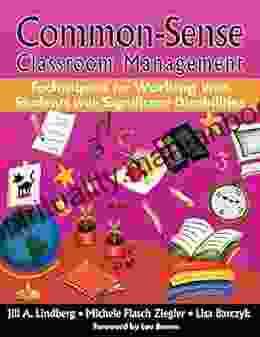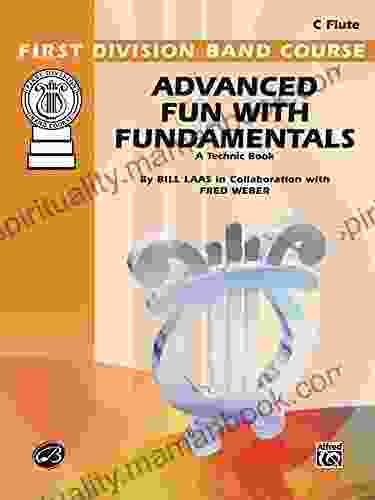Comprehensive Techniques for Effectively Working with Students with Significant Disabilities: A Guide to Empowering Success

Students with significant disabilities face unique challenges in academic and social settings. As educators, we hold the responsibility to create an inclusive and supportive learning environment that fosters their growth and success. By employing research-based techniques and adopting a collaborative approach, we can empower these students to reach their full potential.
Understanding the Impact of Disabilities
To effectively address the needs of students with significant disabilities, it is crucial to understand the nature of their impairments. These may include intellectual disabilities, sensory impairments, physical disabilities, or a combination thereof.
4.5 out of 5
| Language | : | English |
| File size | : | 6679 KB |
| Text-to-Speech | : | Enabled |
| Enhanced typesetting | : | Enabled |
| Word Wise | : | Enabled |
| Screen Reader | : | Supported |
| Print length | : | 179 pages |
* Intellectual Disabilities: Affect cognitive abilities such as problem-solving, memory, and reasoning. * Sensory Impairments: Include visual impairments (blindness or low vision),hearing impairments (deafness or hard of hearing),and speech impairments. * Physical Disabilities: Limit mobility, fine motor skills, or other physical functions.
Techniques for Meeting Diverse Needs
Effective instruction for students with significant disabilities requires individualized approaches tailored to their specific needs. Here are several proven techniques:
1. Universal Design for Learning (UDL)
UDL is a framework that promotes accessibility and engagement for all learners. It involves providing multiple means of representation (e.g., visual aids, auditory cues),expression (e.g., verbal, written,肢体语言),and engagement (e.g., hands-on activities, choice-making).
2. Assistive Technology
Assistive technology devices can compensate for specific disabilities, such as screen readers for visually impaired students or speech recognition software for students with speech impairments. Explore various assistive technologies to identify the ones that best support individual needs.
3. Positive Behavior Support
Students with significant disabilities may exhibit challenging behaviors due to communication difficulties or sensory processing issues. Positive behavior support focuses on understanding the underlying reasons for behavior and developing strategies to intervene and promote positive behaviors.
4. Collaborative Teaming
Involve parents, therapists, specialists, and other stakeholders in the student's support team. Collaboration allows for shared insights, coordinated interventions, and a more comprehensive approach to meeting the student's needs.
5. Social Skills Development
Students with significant disabilities often require explicit instruction in social skills, such as understanding social cues, initiating interactions, and resolving conflicts. Provide opportunities for social practice and role-playing to improve their social competence.
6. Sensory Integration
Sensory integration challenges can impact attention, behavior, and learning. Provide activities that address sensory needs, such as fidget toys, weighted blankets, or sensory rooms.
7. Self-Advocacy
Empower students with significant disabilities to become their own advocates. Teach them strategies for communicating their needs, self-monitoring their progress, and making informed decisions.
Role of the Educator
As educators, we have a vital role to play in creating an inclusive and supportive learning environment for students with significant disabilities. Here are some essential practices:
* Be Patient and Respectful: Understand that students with disabilities may need more time and support. Treat them with empathy and dignity. * Listen to the Student: Engage in active listening to understand their perspectives and needs. Use clear and concise language, and avoid making assumptions. * Collaborate with Parents and Professionals: Seek input from parents and specialists to gain a comprehensive understanding of the student's needs. Share information and work together to develop effective strategies. * Be Willing to Learn: Stay informed about best practices and emerging techniques for working with students with disabilities. Attend workshops, read research articles, and consult with experts in the field.
Working with students with significant disabilities is a rewarding and challenging endeavor. By understanding their unique needs, employing evidence-based techniques, and adopting a collaborative approach, we can empower these students to overcome barriers and achieve their full potential. It is our responsibility to create inclusive and supportive learning environments where all students feel valued, respected, and empowered to succeed.
4.5 out of 5
| Language | : | English |
| File size | : | 6679 KB |
| Text-to-Speech | : | Enabled |
| Enhanced typesetting | : | Enabled |
| Word Wise | : | Enabled |
| Screen Reader | : | Supported |
| Print length | : | 179 pages |
Do you want to contribute by writing guest posts on this blog?
Please contact us and send us a resume of previous articles that you have written.
 Top Book
Top Book Novel
Novel Fiction
Fiction Nonfiction
Nonfiction Literature
Literature Paperback
Paperback Hardcover
Hardcover E-book
E-book Audiobook
Audiobook Bestseller
Bestseller Classic
Classic Mystery
Mystery Thriller
Thriller Romance
Romance Fantasy
Fantasy Science Fiction
Science Fiction Biography
Biography Memoir
Memoir Autobiography
Autobiography Poetry
Poetry Drama
Drama Historical Fiction
Historical Fiction Self-help
Self-help Young Adult
Young Adult Childrens Books
Childrens Books Graphic Novel
Graphic Novel Anthology
Anthology Series
Series Encyclopedia
Encyclopedia Reference
Reference Guidebook
Guidebook Textbook
Textbook Workbook
Workbook Journal
Journal Diary
Diary Manuscript
Manuscript Folio
Folio Pulp Fiction
Pulp Fiction Short Stories
Short Stories Fairy Tales
Fairy Tales Fables
Fables Mythology
Mythology Philosophy
Philosophy Religion
Religion Spirituality
Spirituality Essays
Essays Critique
Critique Commentary
Commentary Glossary
Glossary Bibliography
Bibliography Index
Index Table of Contents
Table of Contents Preface
Preface Introduction
Introduction Foreword
Foreword Afterword
Afterword Appendices
Appendices Annotations
Annotations Footnotes
Footnotes Epilogue
Epilogue Prologue
Prologue Allie Burton
Allie Burton John Dryden
John Dryden Heather C Leigh
Heather C Leigh Boye Lafayette De Mente
Boye Lafayette De Mente Christina Delia
Christina Delia Elle M Drew
Elle M Drew Anne Peterson
Anne Peterson Dreda Say Mitchell
Dreda Say Mitchell Casey White
Casey White Maxence Fermine
Maxence Fermine Rebecca Roanhorse
Rebecca Roanhorse Peter Spitzer
Peter Spitzer Sheena Binkley
Sheena Binkley Emma Donoghue
Emma Donoghue Todd R Tresidder
Todd R Tresidder Sarah Mackenzie
Sarah Mackenzie Casey Morris
Casey Morris Myunique C Green
Myunique C Green Avi Pranish
Avi Pranish Chris Scott
Chris Scott
Light bulbAdvertise smarter! Our strategic ad space ensures maximum exposure. Reserve your spot today!

 Eugene PowellLove Haiku Poems: A Poetic Exploration of the Profound Connection Between...
Eugene PowellLove Haiku Poems: A Poetic Exploration of the Profound Connection Between...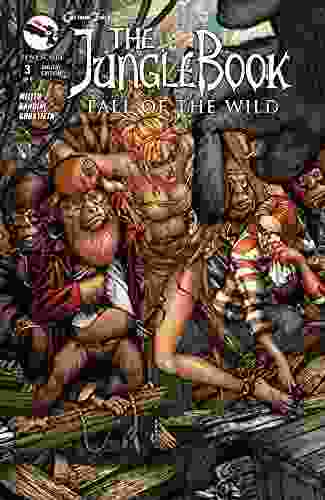
 Mario BenedettiThe Jungle Book: Fall of the Wild - An Epic Tale of Nature and Conservation
Mario BenedettiThe Jungle Book: Fall of the Wild - An Epic Tale of Nature and Conservation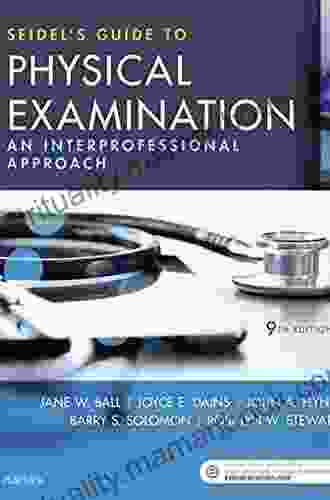
 Wesley ReedSeidel's Guide to Physical Examination: A Comprehensive Guide to Assessment...
Wesley ReedSeidel's Guide to Physical Examination: A Comprehensive Guide to Assessment... Carl WalkerFollow ·14.5k
Carl WalkerFollow ·14.5k Clarence MitchellFollow ·19.7k
Clarence MitchellFollow ·19.7k Eric HayesFollow ·14.5k
Eric HayesFollow ·14.5k Alexander BlairFollow ·8.4k
Alexander BlairFollow ·8.4k Andrew BellFollow ·19.8k
Andrew BellFollow ·19.8k Floyd PowellFollow ·17.5k
Floyd PowellFollow ·17.5k Howard PowellFollow ·2.9k
Howard PowellFollow ·2.9k Jonathan HayesFollow ·3.9k
Jonathan HayesFollow ·3.9k
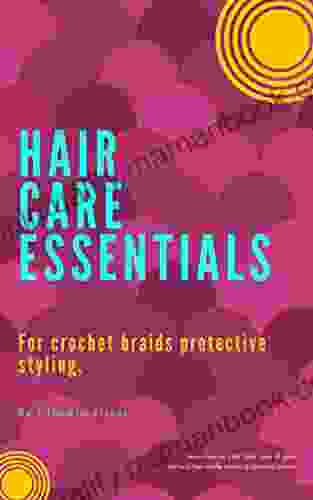
 Thomas Powell
Thomas PowellHair Care Essentials for Crochet Braids: A Protective...
Crochet braids are a versatile and...

 Philip Bell
Philip BellNative Nations of North America: A Comprehensive Guide
North America is home to a...

 Jackson Hayes
Jackson HayesCall Me Crazy: My Unique Journey with Green
In the kaleidoscopic tapestry of life, where...

 Graham Blair
Graham BlairUnveiling the Literary Treasures of Michigan: A Journey...
The literary landscape of...
4.5 out of 5
| Language | : | English |
| File size | : | 6679 KB |
| Text-to-Speech | : | Enabled |
| Enhanced typesetting | : | Enabled |
| Word Wise | : | Enabled |
| Screen Reader | : | Supported |
| Print length | : | 179 pages |


